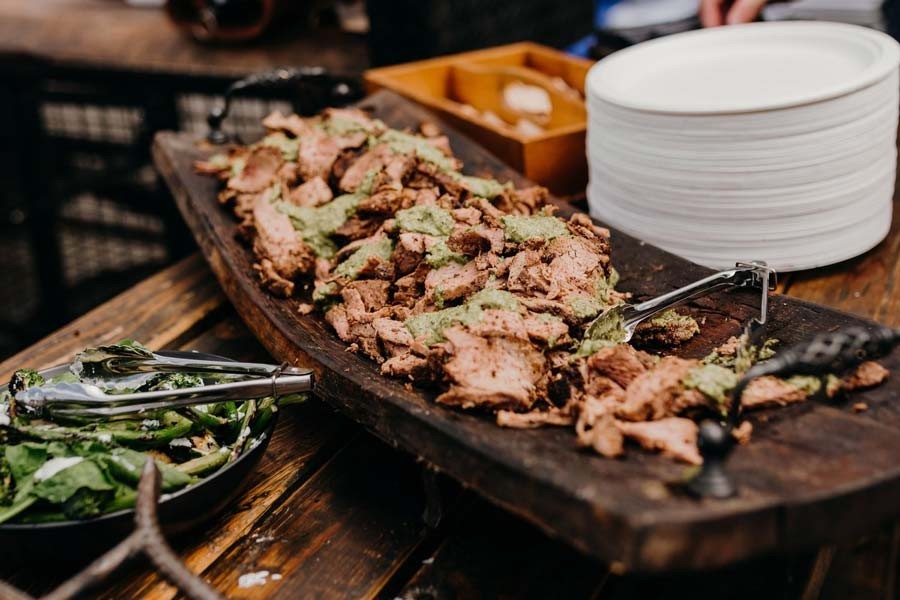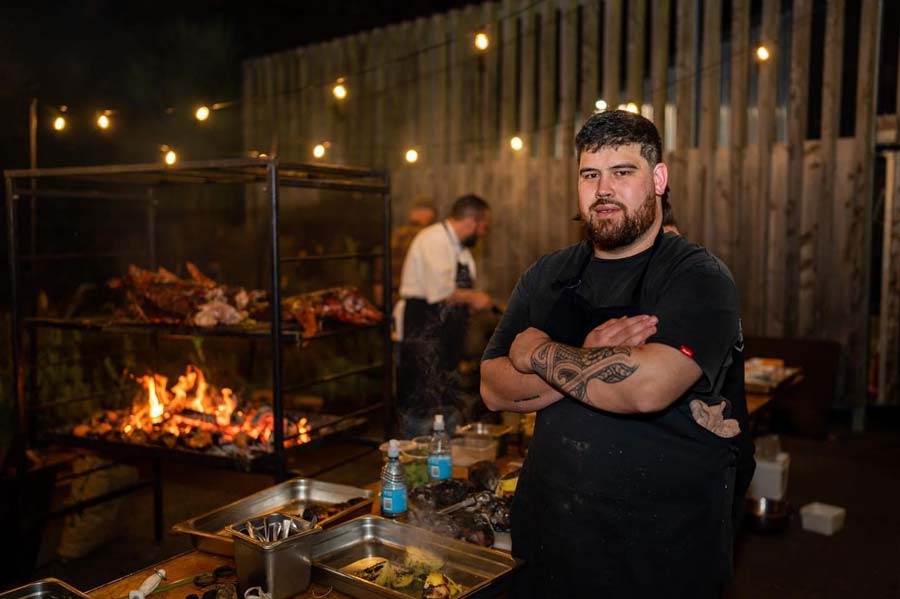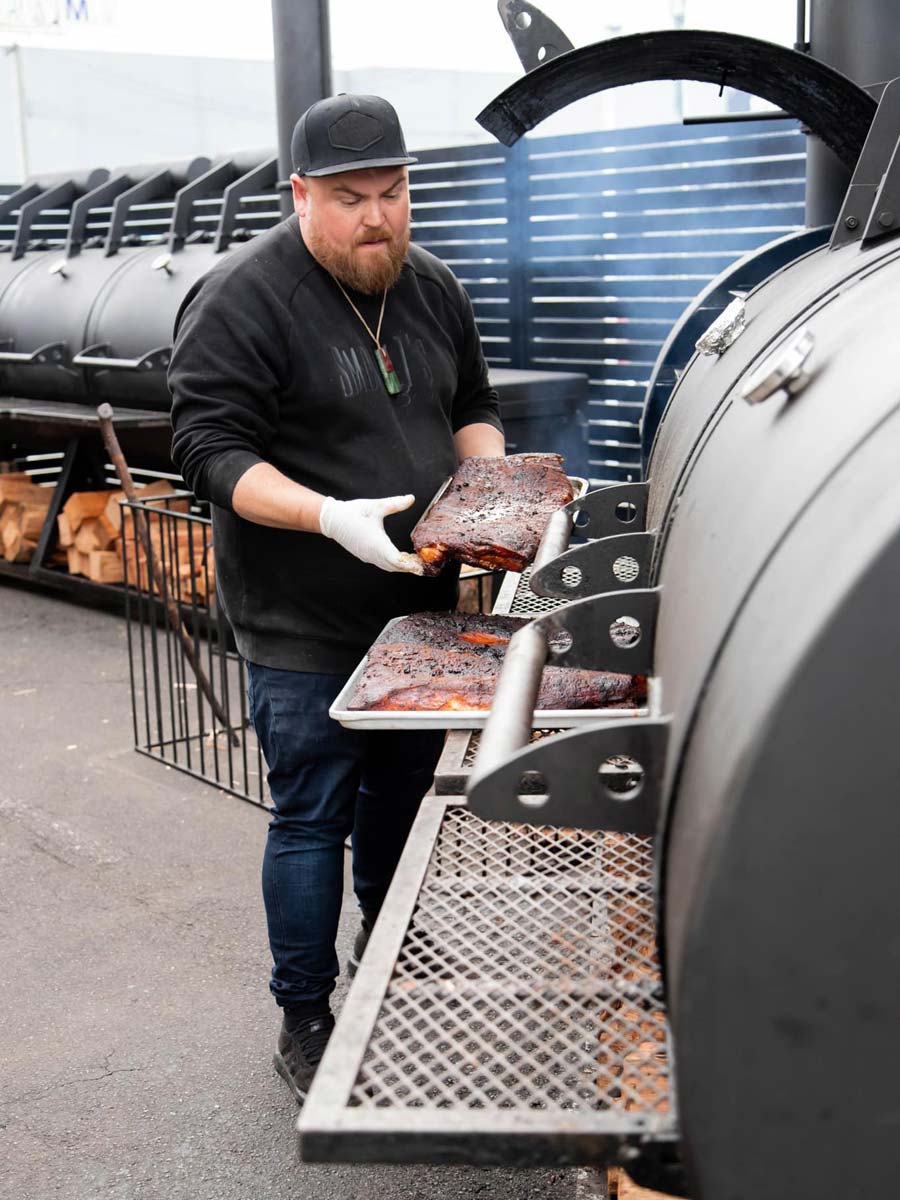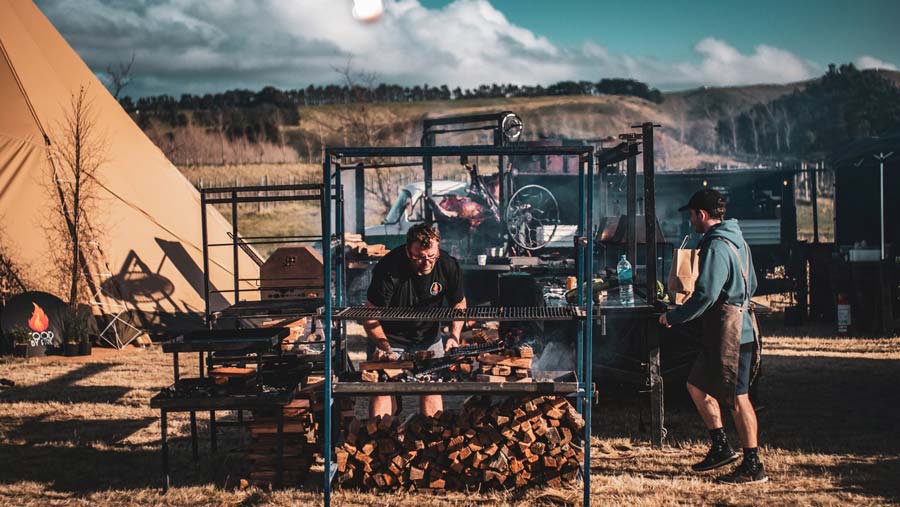Fire starters
US-style low-and-slow, Argentinian asado, South Africa’s braai – all variations on the theme of meat cooked over a fire. As we head into the barbecue season, we talk to two top fire chefs about the allure of the flame.
Cooking over fire is as old as humanity. Even older – palaeontologists have shown that pre-humans living 2 million years ago in southern Africa were the first beings to catch and control fire. Sure made the warthog a little less tough! Wood fire in particular gives food a special flavour. Some believe the hot but mellow effect of cooking on fire is the best for building one’s chi, or life force. Now, after many decades of cooking moving from the firepit to the kitchen, the trend is reversing. Gas barbecues are giving way to wood and charcoal as everyone from serious chefs to backyard burners catch the wave of flame. Two chefs have been at the forefront of the movement, Food By Fire’s Josh Hunter and Smokey T’s Tristin Anderson.
Tristin Anderson – Smokey T’s
A former executive chef who once managed 32 chefs across several Christchurch restaurants, Tristin says he’s been grabbed by a "smoke addiction”. From his custom cooker, he serves 10-hour smoked brisket, 6-hour smoked pork belly and 2-hour smoked jerk chicken in tacos, burgers and platters as well as classic ribs and delicious sides. Smokey T’s scooped the People’s Choice gong two years running at the Canterbury Hospitality Awards.
How would you describe what you do?
Smokey T’s BBQ is a mix of Texas meets Kansas. We feel more Kiwis love a saucy-style rib and well-seasoned beef. We touch base with all BBQ flavours really.
How did you get into it?
Over my 26 years as a chef it wasn’t till about eight years ago I started experimenting with more proteins. I grew up just smoking fish. One day I found an offset smoker at Bunnings, brought it home and boom, I was addicted! I remember stuffing tinfoil around the back of the barbecue trying to patch the leaks and using dryer vent tubes to try and get a better draw on the fire. My friends would drop off wild meats from their weekend catches and I would be up all night trying to perfect the product I was given.
What have been some of the highlights for you with BBQ cooking?
Starting out commercial BBQ’ing was a real buzz. Watching people’s reactions when eating the product was mind-blowing. It was a flavour that hadn’t really hit New Zealand yet. Also we got into competition BBQ and soon realised there was a mad following of people wanting to learn more and share their knowledge. There was a great community behind the passion.
It seems to excite a real passion with professional chefs and serious amateurs alike – why?
There is a real feeling when you get up early and light the fire. There’s something about the smell and watching people react to your food that just hits home.
Any tips for someone starting out?
Select premium quality meat and get your head around fire management.
Josh Hunter – Food By Fire
Founder and chef of Whakapapa of Your Kai, Josh Hunter has always enjoyed cooking over fire and has used fires to enhance the food in several restaurants. But when he worked with Maty Johns and Rod Thomson from Food by Fire and Hannah Crisp from Crisp and Vale on an event called Fire and Feast, he caught the bug.
How would you describe what you do?
The style of BBQ we like to do at Food by Fire is asado, or more of a sub-style of asado called asador criollo, which is barbecuing vertically on an iron cross over an open flame. I'm a huge advocate for supporting small family businesses and for the paddock-to-plate ethos, using local Canterbury ingredients and proteins. This summer we will be using Poaka pigs from Mid Canterbury and Hallfield wagyu beef from Ohoka, North Canterbury.
What makes asado different to a braai or US-style barbecue?
While asado, braai or US-style barbecue all use fire to cook, asado is a South American style of barbecuing and has a real focus on not just the cooking but the performance of cooking over fire at a social event. Asado is the technique commonly used in countries such as Argentina, Chile, Paraguay and Uruguay where it is a traditional event. An asado usually consists of beef, pork, chicken, chorizo and morcilla, all cooked using an open fire or grill called a parrilla. Usually side dishes such as salads accompany the main meats, which are prepared by a designated cook called the asador or parrillero. Braai is South Africa’s unique style of live fire cooking – this feast that can last for hours and there are plenty of rules and etiquette around it. A traditional braai is cooked on local wood, while modern-day braais use charcoal. Both give the meat a distinct flavour. Using gas to cook doesn’t count as a real braai. US-style is more “low and slow”. The four main types are North Carolina and Memphis, which use pork and represent the more traditional styles, and Kansas City and Texas, which use beef as well as pork.
The scene really lends itself to steampunk-style contraptions such as your asado trailer – who designs them?
We're very fortunate to have Rod Thomson design and build most of our asado BBQs inhouse. When we need more or bigger BBQs with lots of steampunk style we get help from Glen O’Neill at local company Flaxton Iron.
Any tips for someone starting out?
Start off by using equipment that doesn't intimidate you and is simple to use, like Weber. It's about experimenting with different produce, temperatures and timings until you get a gauge on how firewood and charcoal change the flavours. And enjoy it – the more you do it the more you’ll understand and your confidence will grow.

Food by Fire

Smokey T's

Smokey T's

